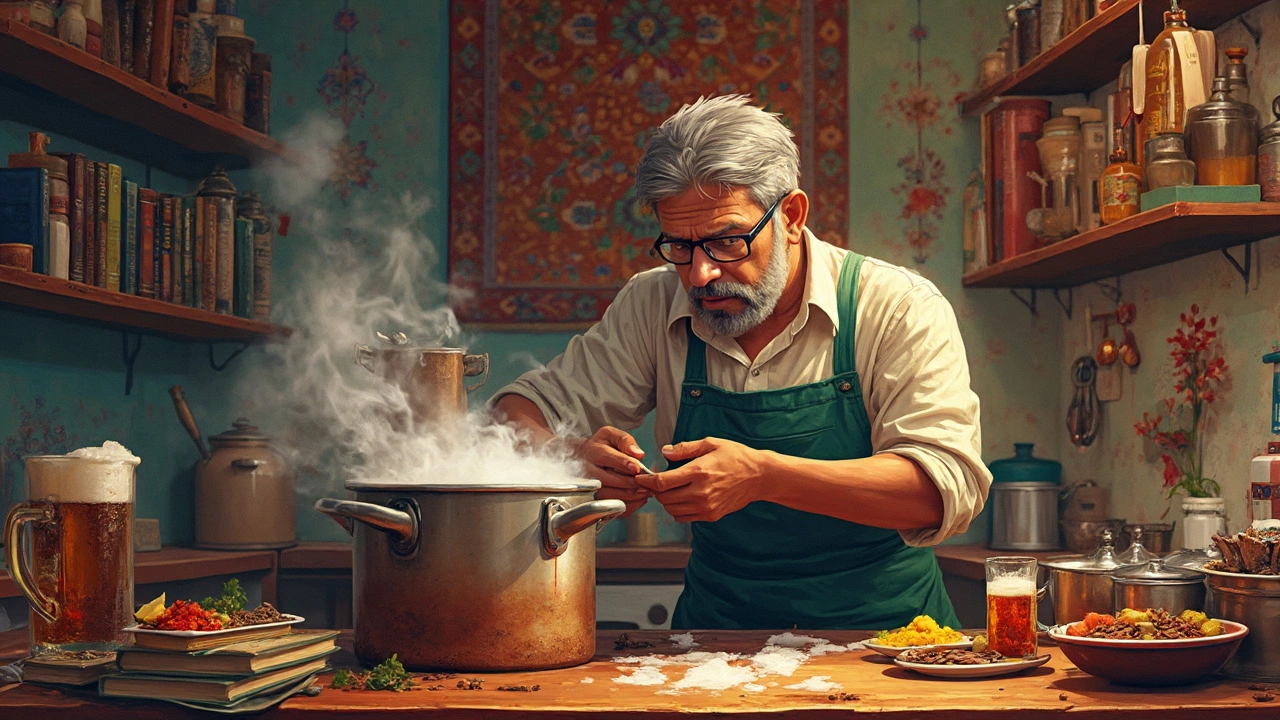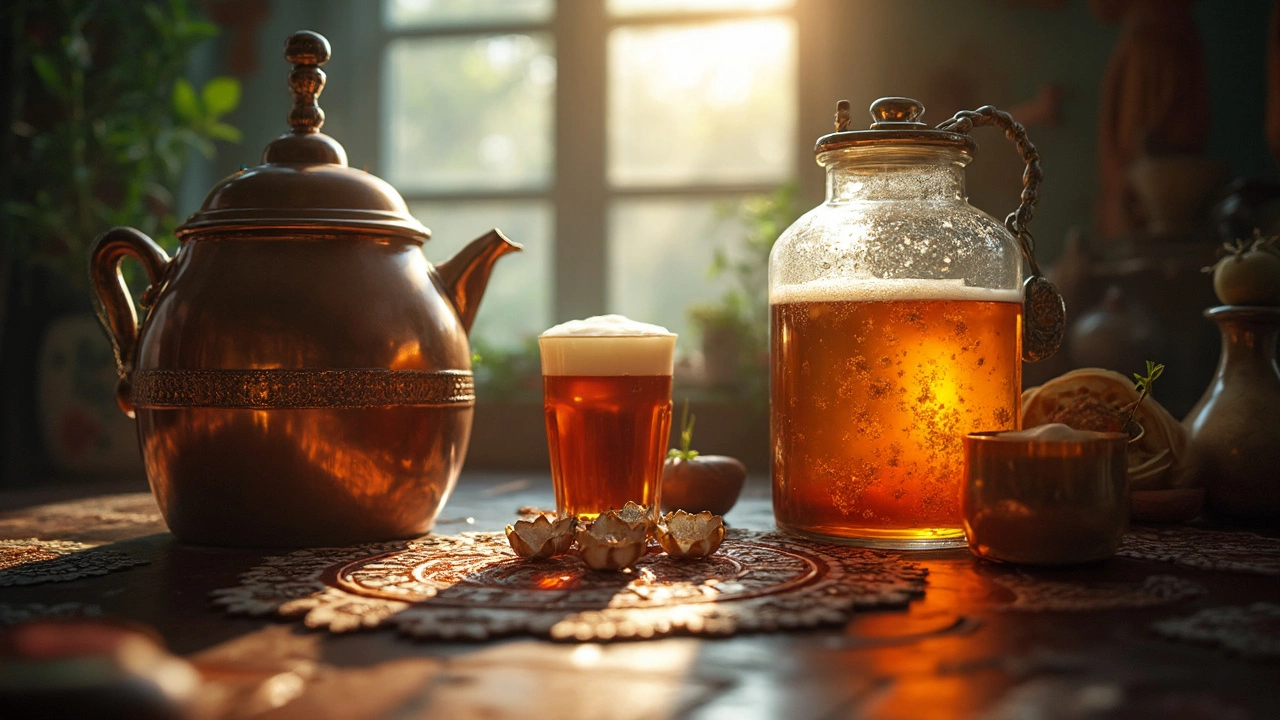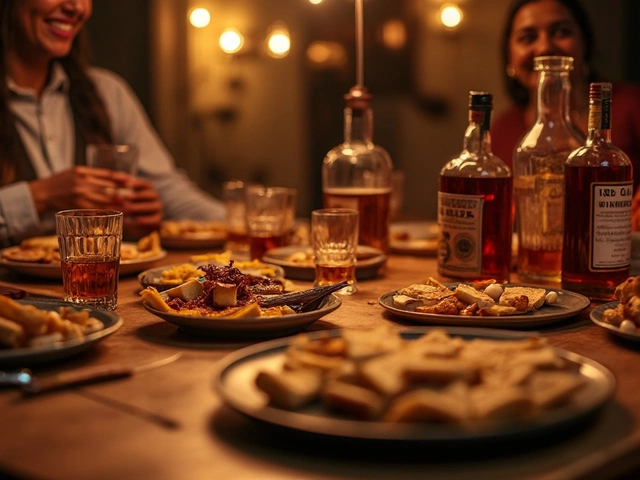
So, you’ve caught the homebrewing bug and are itching to craft your own brewskis. But hold up, not all beers are created equal in the homebrew world. Some are a real pain in the neck to get right, and you might want to know which ones will test your patience before diving in. Let's kick things off by tackling this head-on.
When it comes to challenging beers, Belgian Tripels often pop up on the radar. It’s not just about following a recipe; it’s about achieving that perfect balance of sweetness and alcohol while nailing the fruity and spicy notes. Missing the mark can turn your Tripel into a sugary mess or a bland ale with no character.
Ever tried an Imperial IPA? It’s a hop-head’s dream but can quickly become an amateur brewer's nightmare. The sheer amount of hops required can lead to a brew that's overwhelmingly bitter if not handled with precision. Timing isn't just about boil times; it’s about fermenting properly so the beer doesn’t taste like you're drinking a hop vine. Intrigued or a little daunted? Keep reading, and you might just pick up some savvy tips for avoiding common mishaps.
- The Complexity of Brewing: Why Some Beers are Harder
- A Deep Dive into Belgian Tripels
- The Science Behind Imperial IPAs
- What Makes Sour Beers Tricky
- Top Tips for Tackling Difficult Brews
- A Beginner's Strategy to Mastering Complex Beers
The Complexity of Brewing: Why Some Beers are Harder
Brewing isn’t just a throw-it-all-in-a-bucket kind of gig. Some beers are tougher to crack than a tough old catch. But why is that? To start, it’s all about what's going on in those magical little fermentation vessels. Different styles throw different challenges, so let’s break it down.
First off, there’s the brewing process itself. Simpler beers, like basic ales, are forgiving. Mess up the temperature or leave them fermenting a bit too long, and they might still turn out drinkable. But tougher brews, like Belgian Tripels or Imperial IPAs, demand you hit those temperature marks spot on. Yeast and malt interact differently at various temps, and if you miss your target, you could end up with weird off-flavors that no one wants in their pint.
Then there's recipe complexity. Some beers, especially those higher in alcohol, require a careful balance of ingredients. Precision isn’t just a nice-to-have; it's a need-to-have. For example, sour beers often involve a tricky dance with bacteria and wild yeast. If they're not handled just right, your beer could come out tasting like vinegar.
Water chemistry plays a sneaky role too. It's not just about what comes out of the tap. Hardness, pH levels, mineral content—they all affect the beer's final taste. Water that’s perfect for a light lager might ruin a robust stout. All this means you’ll need to tweak your water’s profile to suit the beer you're brewing. Sounds fun? Maybe for a chemistry buff!
Homebrewing kits promise simplicity, but they can’t always shield you from the tricky bits. Mastering these fine details can be like learning to play an instrument. At first, it's a lot of noise, but with practice and patience, you get closer to orchestrating that perfect pint. So, ready to embrace the challenge?
A Deep Dive into Belgian Tripels
Cue the dramatic music—because brewing a Belgian Tripel is like being on an epic quest with more twists than a binge-worthy TV show. First, let's talk about what defines this beer style. Belgian Tripels are known for their pale golden color and high alcohol content, usually around 7.5% to 9.5% ABV. But don't let the alcoholic warmth overshadow their intricate balance of malt sweetness and fruity, spicy notes.
Why are these beers challenging to brew, you might ask? For starters, fermentation can be a slippery slope. Belgian yeast strains throw off wonderful flavors, but they're finicky. If your fermentation temperature drifts too high, you might end up with a beer that tastes like banana bread or bubblegum—not exactly what you're going for in a classic Tripel.
The trick also lies in the use of candi sugar. It lightens the body while boosting the alcohol content, but it must be used just right. Too much, and you risk a syrupy brew. Too little, and your Tripel might lack the oomph it needs. Patience is your ally here as well, since Tripels need at least a few weeks to condition for all those flavors to meld together.
Here's a fun fact: while many beers call for simple malt bills, Tripels rely on pale pilsner malt to form the backbone of the flavor. It's amazing how simplicity in ingredients doesn't always equate to simplicity in execution.
- Yeast Management: Ensure optimal yeast health and proper fermentation temps to maintain flavor profiles.
- Sugar Addition: Use candi sugar judiciously. Practice and taste tests help refine this.
- Conditioning Time: Be patient and let the Tripel mature—with good notes peaking after several weeks.
Making a Belgian Tripel at home isn't just a test of skill; it's an exercise in patience and precision. Once you've mastered it, though, you'll not only have an exquisite beer but also some serious homebrewer bragging rights.
The Science Behind Imperial IPAs
Alright, let’s talk about the Imperial IPA, the heavyweight champ in the hop world. Brewing this beast at home isn’t just a walk in the park—the science behind it requires some understanding. At its core, an Imperial IPA is loaded with hops and higher in alcohol than your standard IPA. The thing is, all those hops can easily make your beer taste bitter instead of balanced, which is where the challenge really kicks in.
A key element in mastering this beer is understanding the process of hop utilization. This refers to how much of the hop bitterness, flavor, and aroma actually makes it into your beer, which is influenced by factors like boil time and the pH of the wort. If you’re not careful, you could end up with a brew that’s unpleasantly harsh or overwhelming. The temperature of your boil is crucial here—too hot, and you’ll lose those delicate hop oils.
Ever heard of the bitterness scale or IBU (International Bitterness Units)? Imperial IPAs often score a whopping 60-120 IBU, which is off the charts compared to other styles. But IBUs alone don’t determine taste. You also need a high specific gravity to balance that bitterness with malt sweetness. This is why using a specialty grain bill that includes caramel or Munich malts can add depth and smoothness.
Here's a little fun fact for you: Some homebrewers suggest using a hop back, a nifty tool that infuses hot wort with extra hop oils for aroma. It can take complexity to the next level, giving your IPA that desirable punch of fragrance without adding more bitterness.
Before you get going, there’s another thing to keep in mind: fermentation control. This step can make or break your beer. Yeast health is super important; you want a strain that can handle high alcohol levels, like a California Ale yeast. And folks, don’t forget to aerate your wort well to give the yeast the oxygen it needs to thrive.
Ultimately, getting an Imperial IPA just right may take a few rounds of trial and error. But with patience, meticulous timing, and a bit of scientific savvy, you’ll be sipping on your own successfully-brewed strong, hoppy concoction in no time.

What Makes Sour Beers Tricky
Brewing sour beers at home isn't just challenging—it's a whole new adventure. These beers have their unique flavor profile, all thanks to the wild yeast strains and bacteria that give them their signature tartness. It's like letting nature play a bigger role in your brewing process, which can be both exciting and daunting.
The complexity starts with fermentation. While most beers use standard ale or lager yeasts, sour beers get wild yeast strains or bacteria like Brettanomyces, Lactobacillus, and Pediococcus. These guys don't play by the usual rules. They love to take their sweet time, sometimes fermenting for years before the flavors balance out. This is where patience is not just a virtue; it's a necessity.
Ever wonder why you don't find sour homebrew kits as easily? It's because the process isn't just about time; it also demands controlled conditions to prevent unwanted contamination. Here’s a fun (or frightening) fact: these wild yeasts can be tricky to shut down once introduced. They can sneak into your brewing equipment and ruin future batches of traditional brews if you're not meticulous in cleaning.
Temperature control also plays a huge role. Some sour styles benefit from warmer fermentation temps, encouraging those souring agents to thrive. But get it too warm or too cold, and you might end up with flavors that don't just miss the mark—they miss the whole tart and tangy planet.
Tips for Brewing Sour Beers- Start with a smaller batch to understand the process and minimize risk.
- Use separate gear for sours to prevent cross-contamination with other brews.
- Keep detailed logs of your fermentation timeline and temperature.
- Patience is key—consider aging your sour for an extended period.
In summary, tackling sour beers at home can be a fun experiment if approached with the right mindset and techniques. For those who enjoy a challenge, the payoff can be a deeply satisfying craft beer that's unlike any other.
Top Tips for Tackling Difficult Brews
If you’re up for the challenge of homebrewing some of the toughest beers, having a game plan is key. Let's break down some of the most practical tips to help you succeed.
Start Small: It might be tempting to go all out with a big batch, but starting with a small quantity allows you to experiment without wasting loads of ingredients if things go awry. Nobody wants to chuck five gallons down the drain!
Embrace the Learning Curve: Brewing complex beers like Imperial IPAs or Belgian Tripels involves science and intuition. Don’t rush the process—take notes on every batch. Learning from mistakes is part of the journey.
Temperature Control: This is crucial, especially for Belgian styles that require precise fermentation temperatures. Invest in a good thermometer and keep your brewing space at a steady climate to avoid off-flavors.
Quality Ingredients: Skimping on ingredients can ruin your beer. Get high-quality hops, malt, and yeast. Fresh ingredients often mean the difference between an okay beer and an exceptional one. Remember, flavors really get amplified in complex brews.
Patience is Key: Stouts and sours, for instance, take time to develop their full flavors. Rushing to taste before they mature can lead to disappointment. Give it the time it needs to condition and mellow out.
- Sterilization: Thorough cleanliness keeps unwanted bacteria from impacting your beer’s flavor profile.
- Water Knowledge: Be aware of your water profile, as it can significantly impact taste. Don’t be afraid to adjust it as needed.
- Fine-tuning with Experience: As you gain more experience, you’ll notice subtle changes and improvements in your process.
Homebrewing isn’t just about following a recipe to the tee; it’s about refining your skills with each batch. Knowing these tips gives you a leg up with those ambitious beer kits you’re eager to dive into. As you hone your craft, you'll find that these challenges are what make homebrewing so rewarding.
A Beginner's Strategy to Mastering Complex Beers
Dipping your toes into the realm of challenging homebrews like a Belgian Tripel or an Imperial IPA can feel like trying to tame a wild beast. But don’t worry! With a blend of patience, planning, and a bit of know-how, you can conquer these beasts and maybe even enjoy the process.
Before you jump in, embrace the trial and error mindset. Not every batch will be perfect, and that's okay. Each mistake helps you learn what not to do next time. Start with small batches to minimize wastage, especially when unique ingredients cost a pretty penny. Here are some tips to set you on the right path:
- Start Simple: Before trying a tricky brew, make sure you're comfortable with simpler recipes. This means having nailed a basic ale or lager, so you're used to the equipment and the process.
- Research the Brew: Understand the specific challenges of your targeted beer. For instance, sour beers require precise timing and conditions for fermentation. Watch videos, join forums, and read brewing guides.
- Invest in Quality Ingredients: Skimping on hops or yeast can ruin a batch. Fresh ingredients make a big difference, especially with aroma-heavy brews like IPAs.
- Temperature Control: Fermentation needs a stable temperature. Too hot or too cold and you could end up with off-flavors. Use a temperature-controlled brewing fridge if possible.
- Keep a Brewing Diary: Document what you do every time you brew. Note temperatures, times, and any adjustments. A good record helps you pinpoint what went right or wrong.
- Seek Feedback: Share your brew with friends or fellow homebrewers. Constructive criticism provides insights you might not notice on your own.
So, take a breath, stock up on patience, equipment, and quality stuff, and get yourself ready to tackle the intricate dance of brewing these advanced beers. Whether it's a sunny afternoon adventure or a long-term project across brewing seasons, you'll gain flavorsome rewards while learning more about the art of brewing your favorite homebrews.





Categories